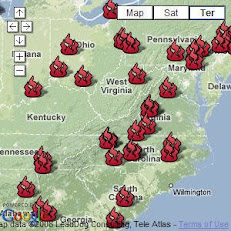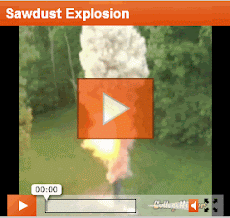
So at what threshold should airborne concentrations of combustible dust trigger a concern for combustible dust related fires and explosions? Mention of industrial hygiene issues is reminiscent of the 2011 Foxconn catastrophic dust explosion in China, where initially workers complained of high levels of aluminum dust respiratory exposure during polishing operations.
Confusion still exists according to media accounts of the high airborne dust levels discovered in the WorkSafeBC inspections at the British Columbia, Canada facility a few weeks prior to Fridays catastrophic explosion. These high levels were for airborne concentrations in regards to respiratory exposure not combustible dust explosive concentration levels. Explosive airborne dust concentrations would require approximately 30,000 times more than the concentration found in the inspections depending on moisture content and particle size. For example, the highest airborne concentration was 5.9 milligrams/cubic meter, which was 2 times over the acceptable threshold of 2.5 milligrams/cubic meter, according to WorkSafeBC inspection reports released to the media.
To put this into perspective we must ask what exactly is 2.5 milligrams? Well if you put a pesky mosquito on a laboratory scale that would be your answer. Of course mosquitoes are not processed in sawmills, lumber is. But this does provide a general idea of 2.5 milligrams of mass. Alternately, using the mass of wooden toothpick provides better idea of how high suspended dust concentrations would be in one cubic meter of volume, such as the volume of a huge glass fish tank.
So here is the math. On an average, a wooden toothpick weighs approx. 100 milligrams on a laboratory scale. Now dissect the toothpick into 40 parts, which would equate to each of the forty toothpick parts weighing the same as a 2.5 milligram mosquito.
Now take three of those individual 2.5 milligram toothpick parts and grind them up to the consistency of sawdust. This would provide about total 7.5 milligrams of mass, a little over the 5.9 milligrams of the high airborne dust level that inspectors found in a cubic meter during the prior facility inspection.
So one must ask, is approx. 1/10 of wooden toothpick sawdust explosive in a cubic meter volume of air? The basis of a combustible dust explosive atmosphere is that the minimum explosive concentration (MEC) must be sufficient to have ignition while in suspension when combined with the fire triangle.Think of MEC analogous to the lower flammable/explosive level LFL/LEL of a flammable vapor or gas.
In contrast a minimum explosive concentration (MEC) of sawdust depending on moisture content and particle size is approximately 300 wooden toothpicks, weighing approximately 30 grams or 30 grams/cubic meter.Hope this helps obtaining insight in the difference between airborne respiratory hazards (milligrams) in contrast to airborne explosive concentrations (grams) of combustible dust. Of extreme importance is to ensure horizontal layers of dusts do not become airborne where a safe respiratory concentration can escalate rapidly into a minimum explosive concentration (MEC). Good housekeeping is key in this respect.









 RSS Feed Subscribe
RSS Feed Subscribe